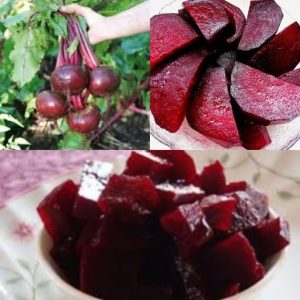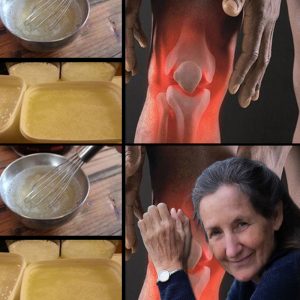Mint, renowned for its refreshing aroma and invigorating flavor, is a versatile herb cherished across the globe. Its applications span centuries, from ancient medicinal uses to modern culinary delights. Whether you cultivate it in your garden or purchase it fresh from the market, mint offers a host of health benefits and practical uses. In this article, we’ll delve into ten health benefits of mint, explore five unique ways to use it, and provide step-by-step instructions on how to incorporate this remarkable herb into your everyday life.
10 Health Benefits of Mint
1. Aids Digestion
Mint is well-known for its ability to soothe the digestive system. It alleviates indigestion and bloating by relaxing the stomach muscles, enabling better food movement through the digestive tract.
2. Relieves Respiratory Issues
The menthol in mint acts as a natural decongestant, helping to clear respiratory passages and making breathing easier. Mint tea or steam inhalation with mint can be particularly beneficial for colds or allergies.
3. Promotes Oral Health
Mint’s antibacterial properties make it a common ingredient in toothpaste and mouthwash. It helps eliminate bacteria that cause bad breath while leaving your mouth feeling fresh.
4. Boosts Immune System
Rich in antioxidants, mint helps protect the body from oxidative stress and supports the immune system in fighting infections and diseases.
5. Reduces Stress and Anxiety
The calming effect of mint makes it a natural remedy for stress and anxiety. The aroma of mint has been shown to reduce fatigue and enhance mood, making it perfect for your relaxation routine.
6. Improves Skin Health
Mint’s anti-inflammatory and antibacterial properties can help treat acne and other skin conditions. Its cooling effect also soothes irritation and itching.
7. Supports Weight Loss
Mint aids in weight loss by stimulating digestive enzymes that help absorb nutrients and convert fat into usable energy. Adding mint to your diet can help control appetite and curb cravings.
8. Enhances Memory and Cognitive Function
Studies suggest that mint’s aroma can enhance memory and cognitive function. Chewing mint gum or using mint essential oil can improve concentration and alertness.
9. Alleviates Headaches
Applying mint oil to the temples or inhaling its aroma can relieve headaches, especially tension headaches and migraines, thanks to its relaxing and cooling properties.
10. Acts as a Natural Insect Repellent
The strong scent of mint deters mosquitoes, ants, and other insects. Planting mint in your garden or using mint oil in your home can help keep pests away.
5 Unique Uses of Mint and How to Incorporate Them
1. Mint Tea
Mint tea is a simple yet powerful way to enjoy the benefits of mint. To prepare, steep fresh or dried mint leaves in boiling water for 5-10 minutes. Enjoy it hot or cold, and sweeten with honey or enhance with a slice of lemon for added flavor. If you’re looking to make your own dried mint, learn how to dry mint naturally at home.
2. Mint Sugar
Mint sugar adds a refreshing twist to desserts and beverages. Wash and dry fresh mint leaves, then blend them with sugar until finely chopped. Spread the mixture on parchment paper to dry completely. Store in an airtight container and use to sweeten tea, sprinkle over fruit, or add to baked goods.
3. Mint Syrup for Beverages
Create a refreshing mint syrup by washing and drying five large bunches of fresh mint. Chop the mint finely, then combine 3 cups of sugar with 1.5 cups of water in a pot. Heat until the sugar dissolves, then add the chopped mint and simmer for 15 minutes. Allow the mixture to cool, strain it, and store the syrup in a sterilized bottle. Use it to flavor lemonade, cocktails, or soda water.
4. Mint-Infused Oil
Mint-infused oil is great for cooking or as a massage oil to relieve muscle pain. Fill a jar with fresh mint leaves and cover them with a neutral oil like olive or grapeseed oil. Seal the jar and let it infuse in a warm, dark place for 1-2 weeks, shaking occasionally. After the infusion period, strain the oil and store it in a clean jar. Use this oil to add a subtle mint flavor to dishes or for a soothing massage. To ensure your mint grows lush and healthy, check out these natural methods for growing lush mint.
5. Mint-Enhanced Skincare
Incorporate mint into your skincare routine for a refreshing effect. To make a mint facial toner, boil a handful of fresh mint leaves in 2 cups of water for 10 minutes. Let it cool, strain, and transfer the liquid to a spray bottle. Use this toner to refresh your face throughout the day or after cleansing.
Disclaimer
While mint is generally safe for most people, it can cause allergic reactions in some individuals. Those with gastroesophageal reflux disease (GERD) should use mint cautiously, as it may exacerbate symptoms. Pregnant and breastfeeding women should consult their healthcare provider before consuming large amounts of mint or using mint essential oils. Always perform a patch test before applying mint-infused products to the skin to ensure there is no allergic reaction.
Mint is a versatile herb with numerous health benefits and practical uses. Whether you’re sipping on mint tea, sweetening your desserts with mint sugar, or incorporating mint-infused oil into your skincare routine, this remarkable herb can enhance your daily life in countless ways. With its refreshing flavor and aroma, mint is a must-have in every home, offering both health benefits and culinary delights. Explore these uses and integrate mint into your lifestyle for a refreshing and health-boosting experience.





